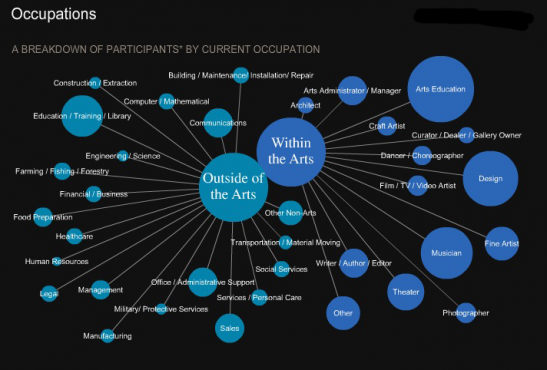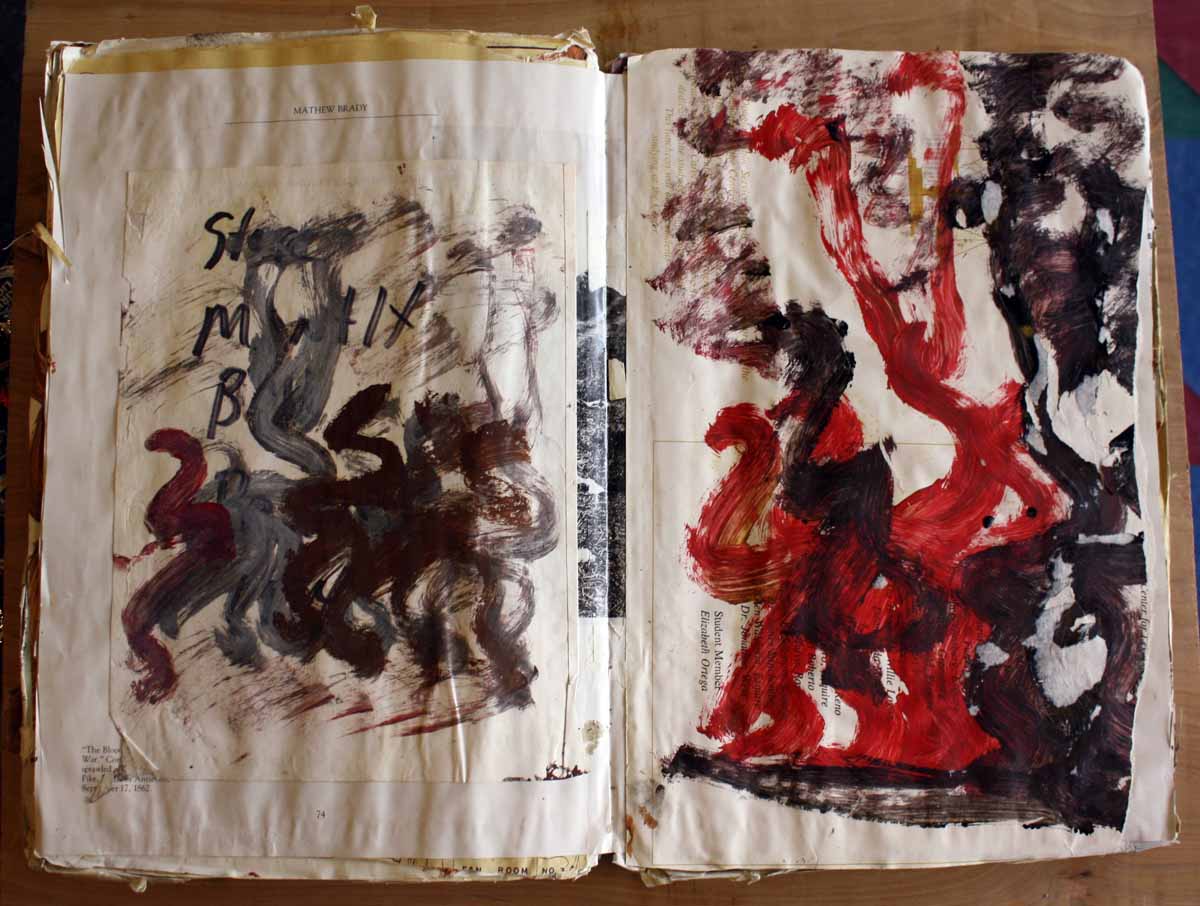 (Chart courtesy of Snaap)
(Chart courtesy of Snaap)
By Carolyn Mooney (via: Chronicle)
Parents, it’s OK to send your kids to art school!
A national survey of 13,581 arts-school alumni found that almost three-quarters of those who intended to work as a professional artist had done so at some point since graduating, and 90 percent of all respondents rated their educational experience as good or excellent. Even among those not working in the arts, a majority said their arts training was relevant to their work, according to the latest findings from the Strategic National Arts Alumni Project (Snaap).
“That really dispels the common perception that the choice to study the arts in a professional-degree program is a doomed endeavor,” says Douglas Dempster, dean of the College of Fine Arts at the University of Texas at Austin, and a member of Snaap’s advisory board. “Many schools, including ours, haven’t had good data on the professional outcomes of our graduates, and I think many of us feared what we might learn.” But he found many of the statistics, especially those on alumni working in their chosen field, ”surprisingly encouraging.”
While arts graduates aren’t bitter, however, neither are they wealthy—63 percent were self-employed, and 57 percent of current professional artists held two jobs concurrently (and 18 percent held three or more jobs). A significant minority said their institution did not adequately help them acquire financial and business skills needed in their work. That figure suggested a “mismatch” between graduates’ training and work skills, according to the survey report, “Forks in the Road: The Many Paths of Arts Alumni.”
Of those who had stopped working as professional artists, the top reasons cited were: better pay or steadier income; lack of available work (39 percent); and debt, including student loans (25 percent).
Alumni from 154 arts programs took part in the 2010 survey. The latest data set is the largest and most comprehensive yet, and confirms and amplifies findings from two earlier surveys. The online project, intended to provide a national picture of artists’ development, is run by the Indiana University Center for Postsecondary Research in collaboration with Vanderbilt University’s Curb Center for Art, Enterprise, and Public Policy. It’s modeled after the National Survey of Student Engagement, which collects data on student involvement in academics and is also run by the Indiana center.
Steven J. Tepper, associate director of the Curb Center, noted that 22 percent of those surveyed never planned to become professional artists, but chose to go to art school anyway. For many, the creativity and skills developed in art school carried over to other professions. “I think it’s interesting how many people working outside the arts are happy they went to arts school and would do it again,” he says. “People who ended up as lawyers were no less happy with their arts training.”
As might be expected, professional artists appreciated the creative opportunities their work offered, but weren’t happy with their salaries. For example, 80 percent of fine artists were “very satisfied” with the opportunity to be creative in their work, while only 8 percent said the same about their income.
That gulf may be impossible to overcome, but Dempster believes the survey data will help art schools adjust their curricula and faculty members adjust their expectations. “Many of our graduates are going on to a great diversity of fields,” he says. “We should be encouraging that as an appropriate and successful and honorable outcome, and not fostering overly narrow expectations about their professional prospects. That will be a revelation for many of our faculty, who tend to measure their success by a very narrow expectation for their students.” The survey data will also help art schools satisfy accreditors’ demands for institutional data and accountability, he says.
After three years of pilot testing, the project is now registering colleges that want to take part in the first national administration of the survey, in the fall. For more details visit the project’s Web site at http://www.snaap.indiana.edu/. Interactive graphics based on the 2010 data will be available at http://www.snaapshot.org/.
SNAAP is a project of the Indiana University Center for Postsecondary Research in collaboration with the Vanderbilt University Curb Center for Art, Enterprise, and Public Policy. Lead funding is provided by the Surdna Foundation, with support from the National Endowment for the Arts, Houston Endowment, and others.
